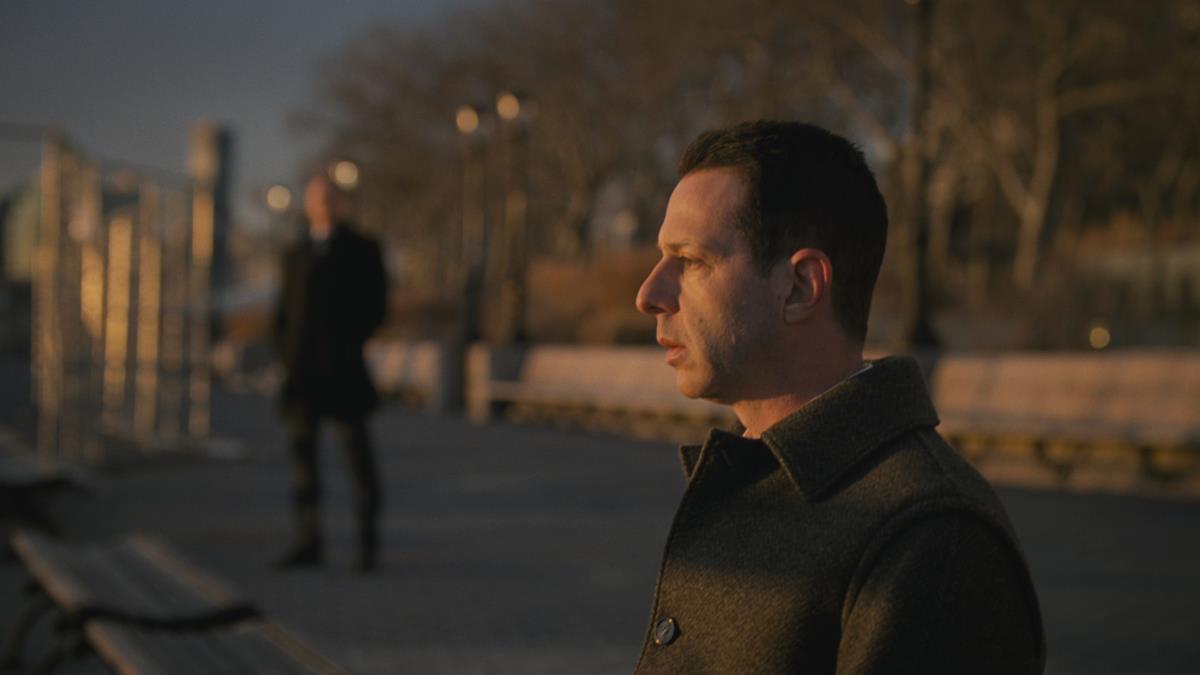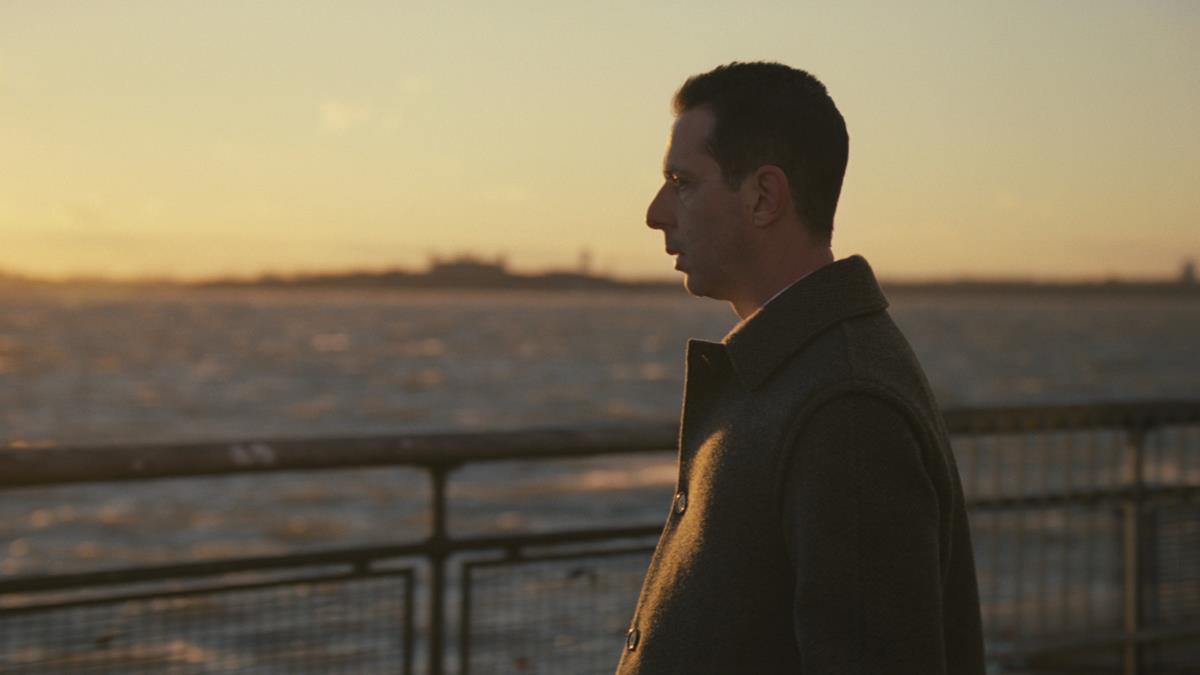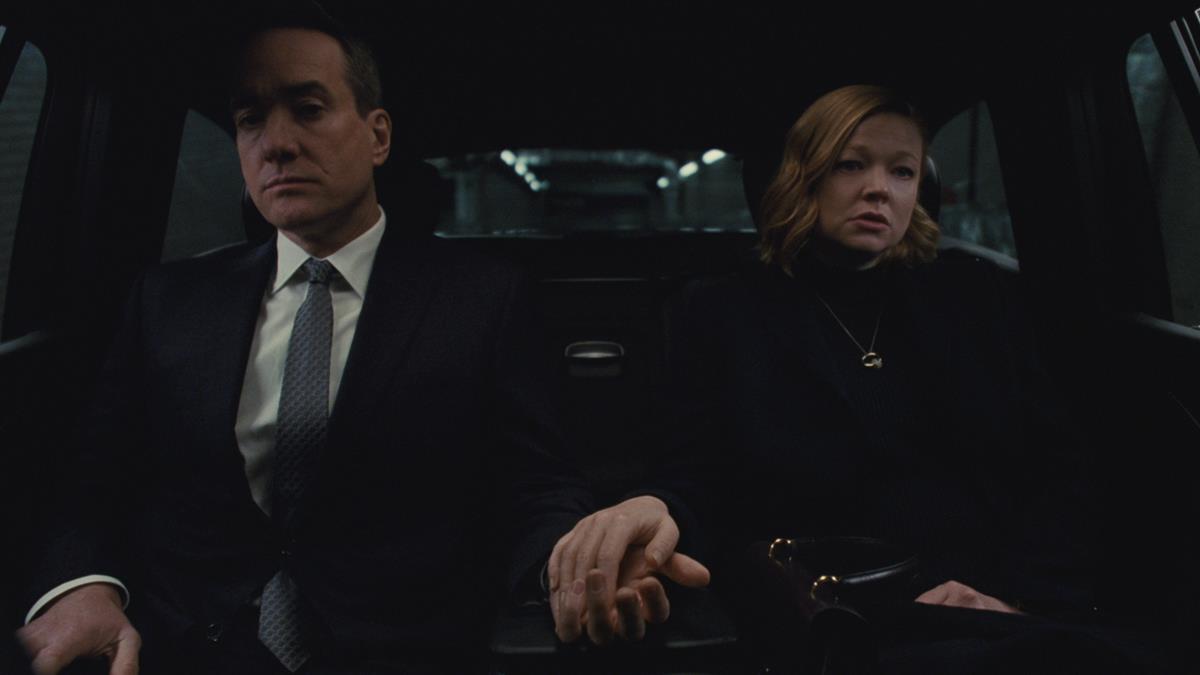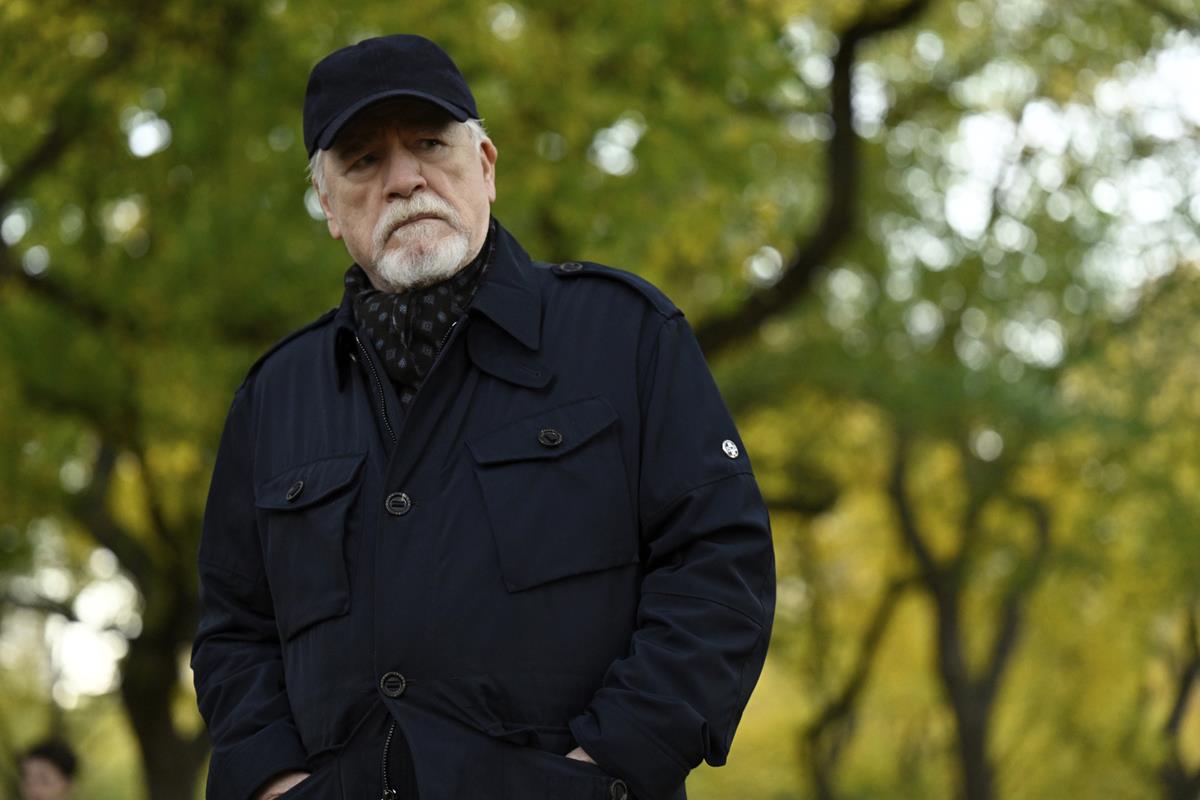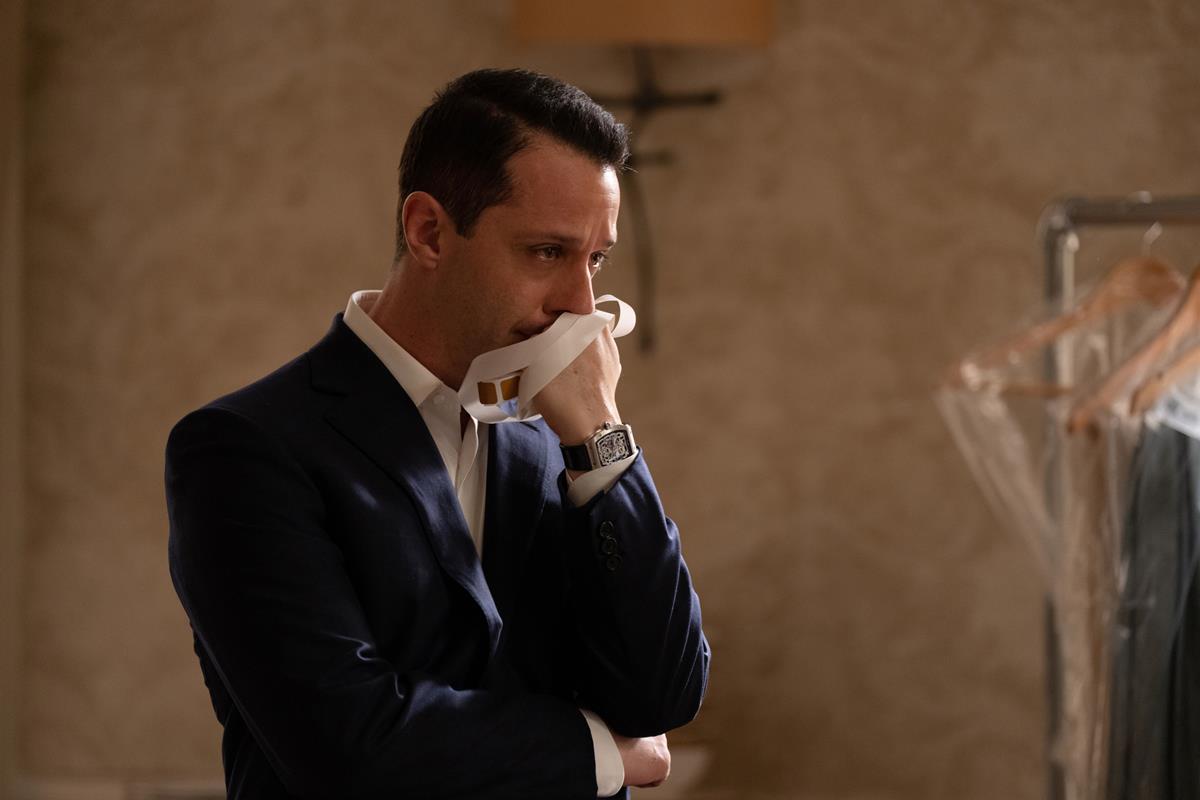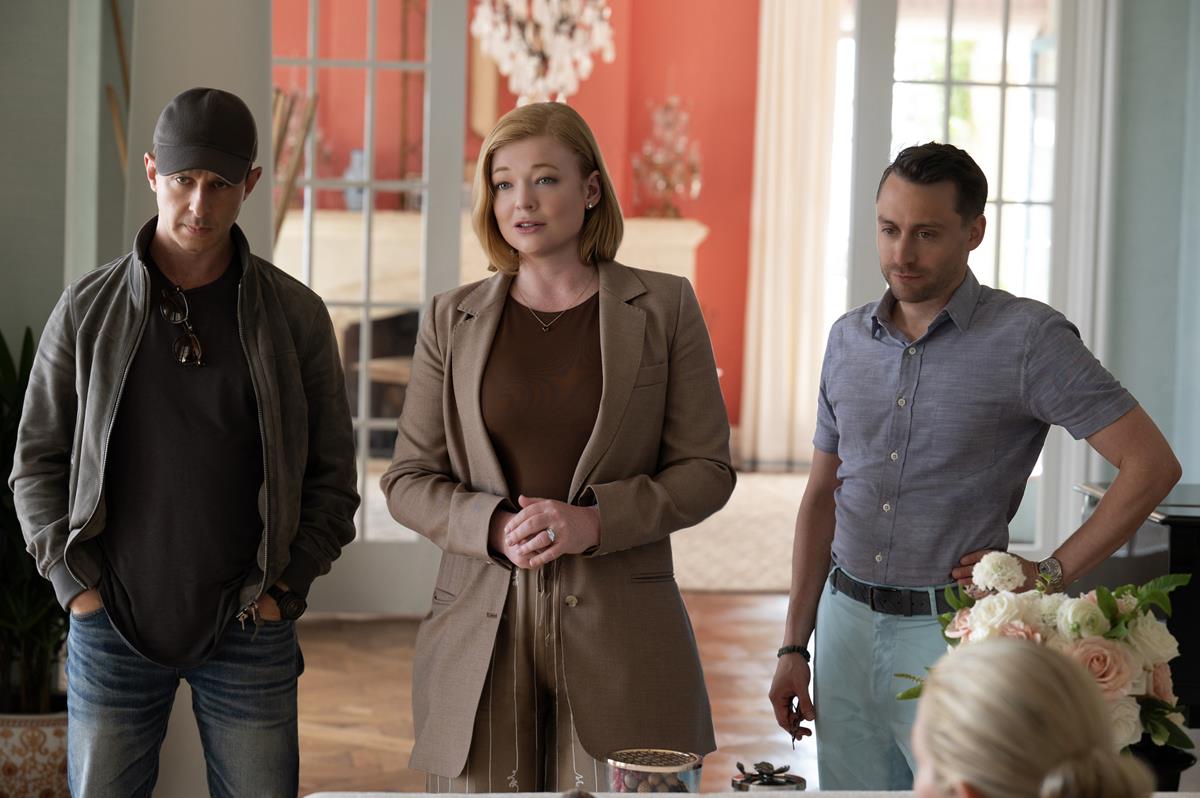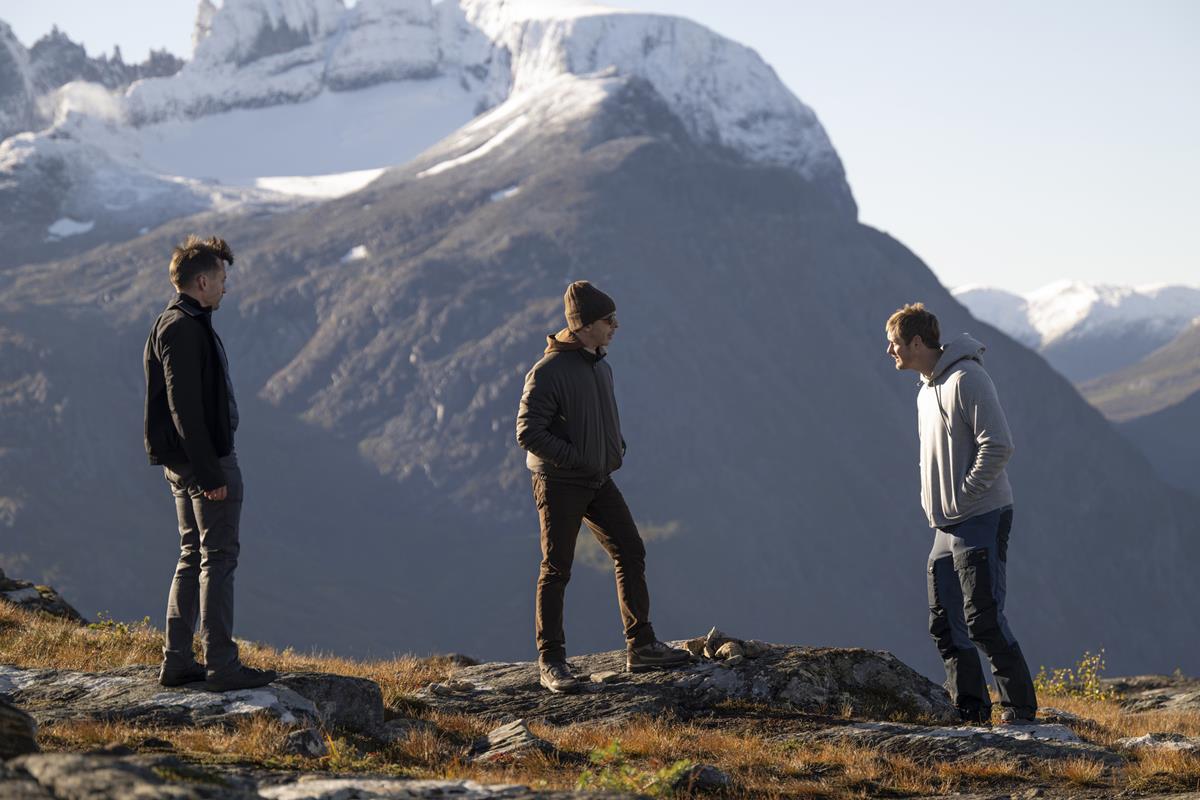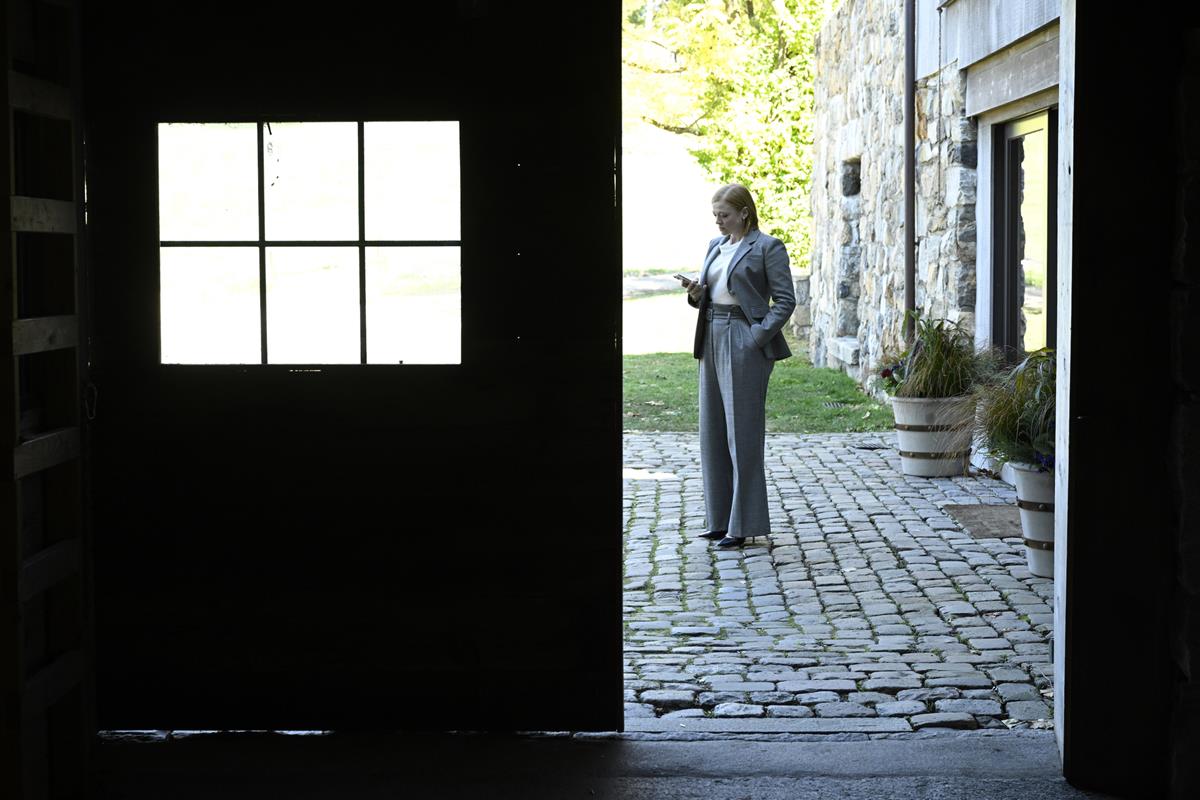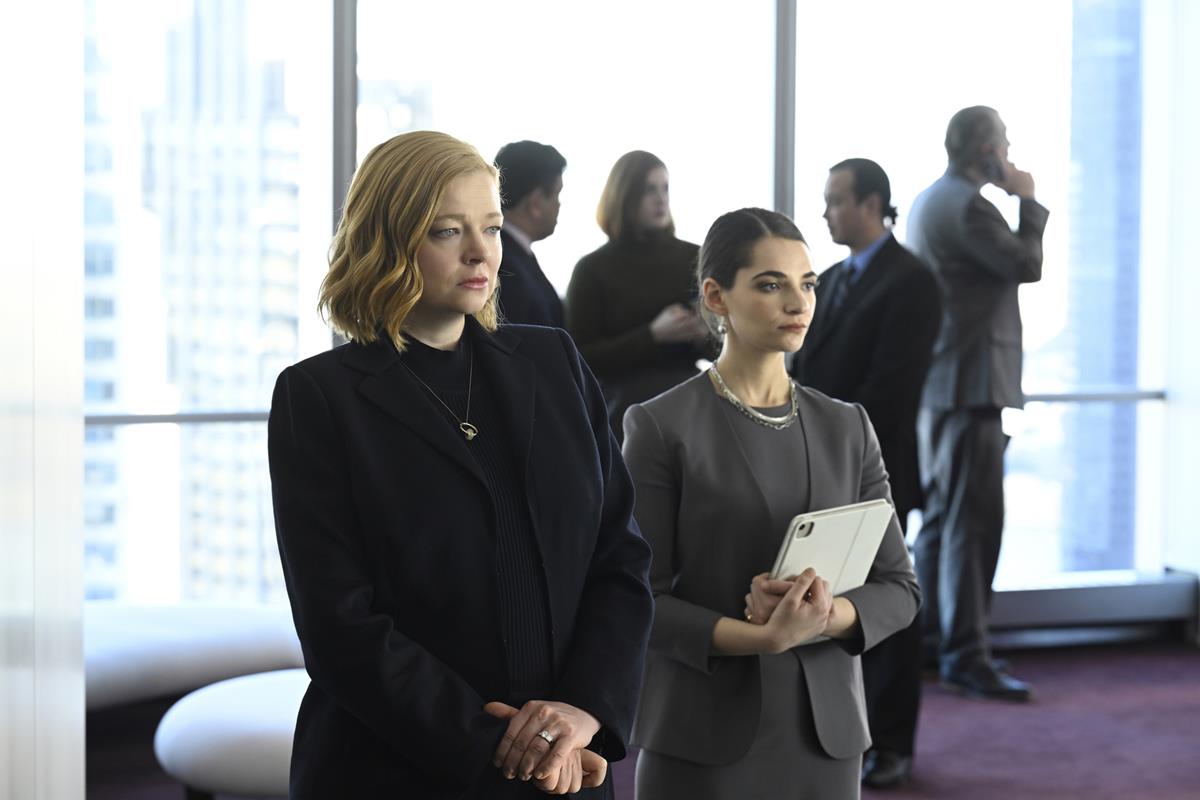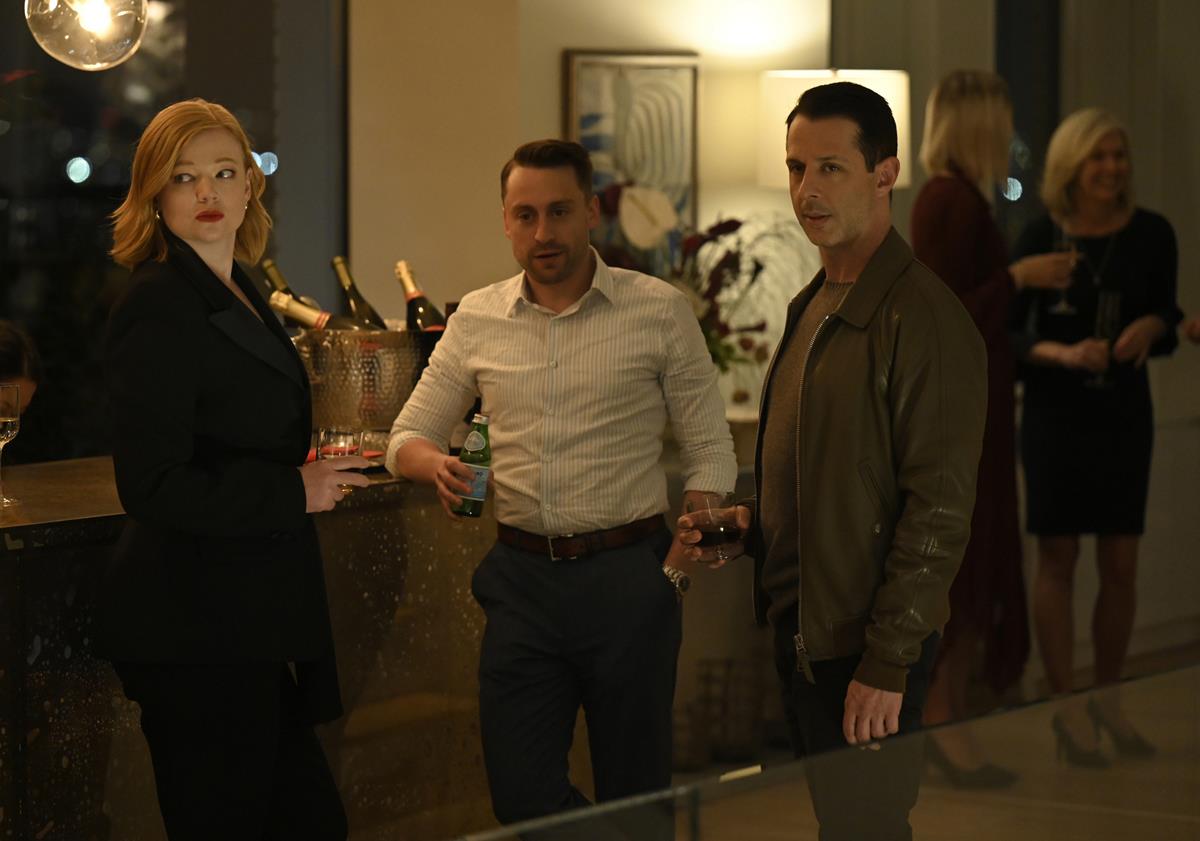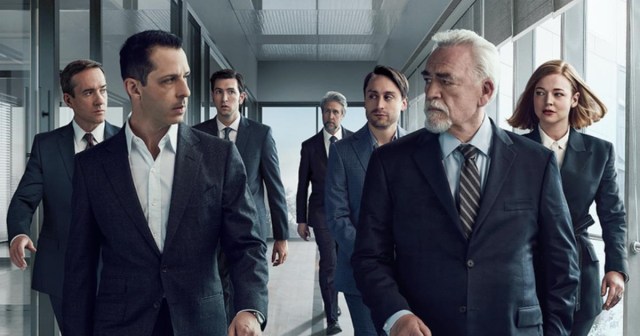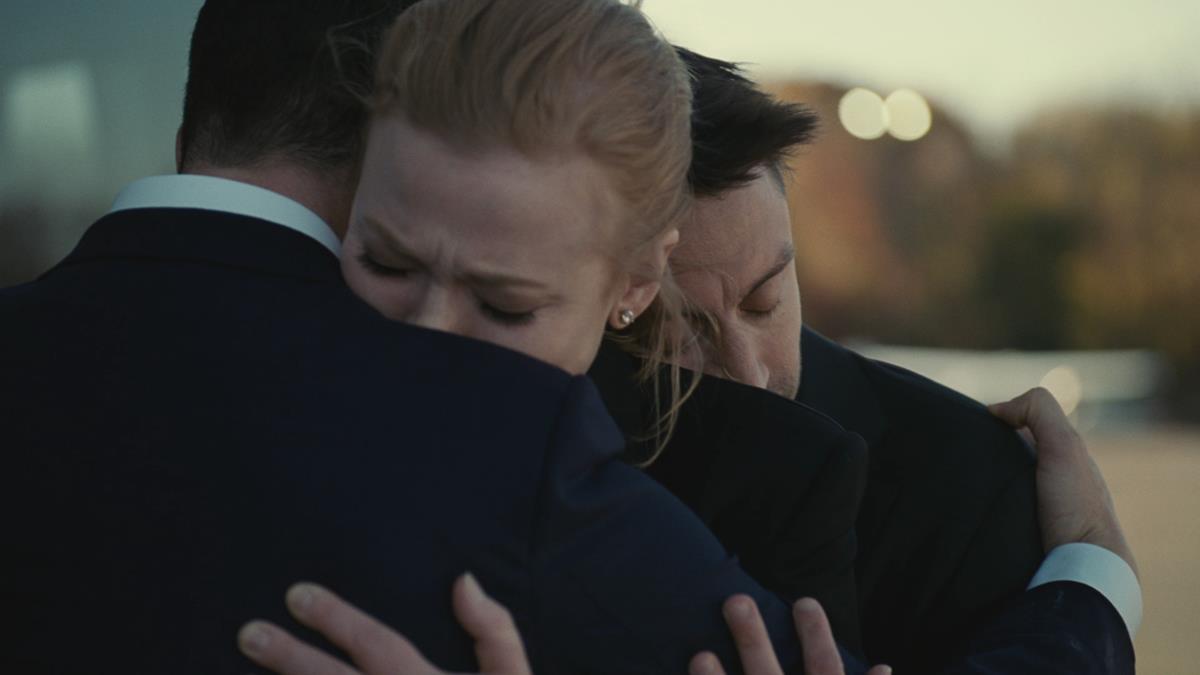
TL;DR
- In the wake of the season finale of “Succession,” cinematographer Patrick Capone, ASC, series director Mark Mylod and senior colorist Sam Daley reflect on what made working on the series so special.
- Both Mylod and Capone tried to not get in the way of the action that unspooled in the pivotal boardroom meeting in the final episode, letting it unfold as naturally as possible.
Following the devastation of the Season 4 finale, fans of Succession waited for a hint of more from the Roys. In its wake, we looked for signs of an offshoot story from supremo Jesse Armstrong or an origin tale, maybe examining the depths of how Marcia had earned her ultimate prize or how Kendall would finally fit the half-Loganized skills he had begun to exhibit. But like the wait for a concert encore, the creeping realization arrived that that was that.
But Succession fandom means never having to apologize for picking over seasons, episodes, or even furtive glances contained in scenes. We’re all guilty of that, with enough room left over for even more dissection.
One of the show’s cinematographers, Patrick Capone, ASC, who had worked on the HBO series since its first season in 2018, recently commented on his time there. He summed up his postpartum feelings. “Listen, we’ve all had jobs that we love working on, and they were lousy movies or really good movies, but they were tough to work on. This is the perfect storm. It was great people. It had phenomenal scripts. I had a voice. I’m proud of my work. We traveled all around the world. And hopefully, there’ll be another job like this somewhere.”
Capone was talking to American Cinematographer’s Iain Marcks immediately following the show’s final grading session with senior colorist Sam Daley; they were both feeling raw and emotional, which made talking with them even more heartfelt, but they were ready to genuflect. It’s a poignant interview.
Marcks began with a question that hung in the air, “So what is there to say about the making of Succession that hasn’t already been said?”
Both interviewees settled on tributes to the medium of film. All four seasons had stuck to celluloid, but a world without Succession may mean tough times ahead, especially for New York’s film production community. Sam Daley, “I realized I don’t know any other episodics that primarily shoot film. I know of a few that may have done it for certain scenes or episodes, but primarily as the acquisition source. I thought it would be nice to remark on that so that people can appreciate when they watch our, you know, our final episodes that, you know, a lot of time and effort and craft went into making these images that were captured on film.”
Capone added a layer of worry to Daley’s point, “And my concern with Succession ending is we have enabled smaller films in the New York area to be able to shoot film because there is an active lab that’s staying above water because we shoot 30,000 feet a day. So I’m concerned with this lack of volume going to the Kodak lab, which might affect the film community in New York City if, indeed, this lab can no longer stay above water.”
The show used (Kodak Vision 3 5203) 50 daylight. “But often we had to use the (Kodak Vision 3 5219) 500 tungsten depending on where we are, what type of day it is,” Capone added.
READ MORE: Succession/Patrick Capone, ASC and Sam Daley (American Cinematographer)
In another post-finale session, Capone shared his thoughts with series director Mark Mylod. They spoke with Chris Murphy at Vanity Fair about the showdown of the Roy siblings, especially the scene where Shiv hurriedly exits the boardroom with the final vote for control of Waystar Royco hanging in the balance.
“We wanted to use the reflections and the glass bowl within the glass bowl within the glass building,” says Capone. The result is the Roy children on full display, putting on a show of their worst qualities and deepest insecurities in front of both board members and their employees. “With camera placement and the actors blocking, we were able to make their fight kind of on a little bit of a stage where the board members can see it, and yet they can’t hear it,” continues Capone. “Only we can hear it until it gets vocal toward the end.”
“It was probably the most important scene of the entire series,” added Mylod.
Both Mylod and Capone tried not to get in the way of the action that unspooled, letting it unfold as naturally as possible. “That’s the beauty of our style,” says Capone, “It’s just so subjective, and the camera has the ability to point the audience where we feel they should go to get what’s being told, like a fly on the wall.”
To properly capture the end of an American dynasty, finding a location that was appropriately devastating and stately was important. “We found these two offices. The main boardroom, and we found this other office that I had never shot in,” says Capone. “It’s one of the World Trade Center buildings. I want to say it’s number seven. And it’s about 35 floors up.”
To create that fishbowl effect, Capone had to change some of the overhead lighting in both the boardroom and the adjacent room where the siblings fight, filling the overhead with Astera lights. “When you show up at these buildings, you have no idea what kind of day it’s going to be,” Capone said. “It could be a hot, sunny, cool, cloudy day. So that was important to us and to be able to use as much negative fill as we could.”
“Some of my favorite shots are very low depth of field, and the figures in the background through the glass are almost ET-like,” Capone continues. “They’re very, very thin slivers of line out of focus, and with the light from outside just wrapping around them. And I love stuff like that. It gives it a lot of depth.”
READ MORE: How Succession Director Mark Mylod Captured the Most Important Scene of the Series (Vanity Fair)
Capone and Mylod also unpacked their Succession journey with IndieWire’s Sarah Shachat, sharing anecdotes with a focus on Logan’s funeral in Episode 9, “Church and State.”
“The tonal tug between tragedy, comedy, and a sort of breathless incredulity is both very funny and very sad and is often carried through camera movement and the way the operators find character reactions. Multiple cameras covered all the eulogies at once, but the energy of the performances impacts how shaky or stable the camera feels to the viewer,” Shachat writes.
“Even Ewan’s (James Cromwell) eulogy was handheld, but it’s like a dance. When you feel that it’s emotional when you feel that Roman’s becoming unhinged, you know we feel a gut instinct (to have) more movement and move around him more. Ewan was a more stable foundation of a eulogy, so even though we’re still handheld, we didn’t feel necessarily that we had to dance around him as much,” Capone said.
The shift to Kendall, who has not had a great day with the women in his life, and the choice to emphasize his non-reaction to that moment, was also the kind of unplanned kismet that comes from leaving the camera operators open to where the emotion of a scene takes them. “Mark Mylod and I are sitting next to monitors all the time, and we’ll know something’s coming up, or the operators do it instinctively,” said Capone.
“At one point, we pretty much did a 20-minute take, similar to the day Logan died,” he continued. “The A camera operator and assistant had two cameras, and as soon as one ran out of film, they would just pick up another (camera body), and another team would reload it for them. We had five cameras at the funeral but six bodies because we would flip the A camera and keep going.”
If you wanted an educated take from this superb television series, it would be how we, as the audience, witnessed these selfish monsters’ often terrible behavior.
Many words and videos have endorsed how the cameras move through the Succession story; it’s ultimately a cynical eye, an anti-capitalist stance. Capone explains the original idea, “Billionaires cannot control the weather, they cannot control health, things like this. So the fly on the wall camera effect was the rest of the world watching these billionaires,” he says.
“They have no idea how good they have it. So we tried to create a naturalistic environment of classic films where the actors could move around. This is the most amazing ensemble I’ve ever been exposed to. The operators, I feel, fall into that ensemble,” Capone continues.
“Cinematography is more than just lighting for the cinema. Cinematography is camera placement, camera movement, and the ability to take the audience and point them in the direction that you think they should be watching. And that’s what we do so well, I think.
“So, we like mistakes, but we like mistakes that just happen to real life, that happen a lot of times. Whether it’s a late focus or a camera getting to an actor moment after his word. I was brought up in a classic cinema business where some DPs said, you know, the crosshairs have to be just to the left of the nose, and this far, and the headroom is here, and the horizon has to be there.
“If you look at artwork, there are no rules. You just need to have an image that helps tell that story and, more importantly, the emotions of that moment. And I think that’s something we’ve done pretty well, and people have picked up on. And they think they’ve picked up on things where they’re totally wrong. But other times, they pick up on things that are right on.


